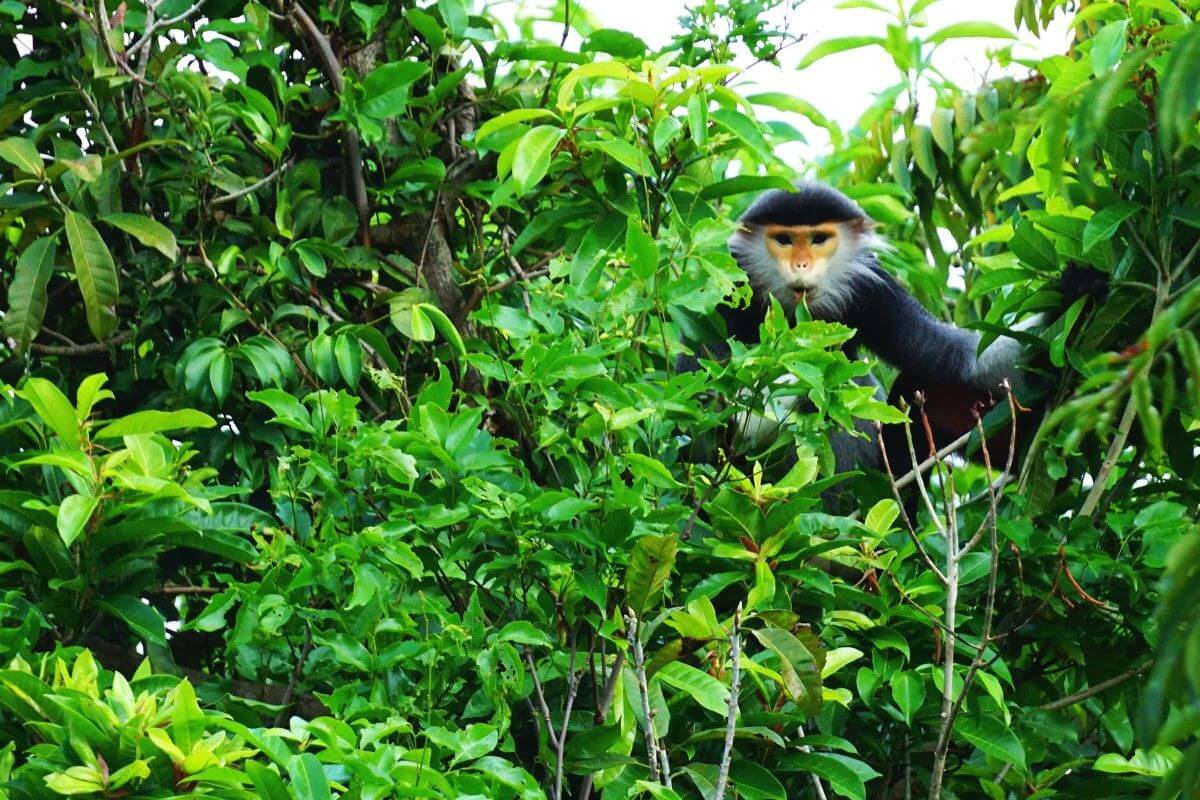
DANANG, VIETNAM – We’ve crawled out of bed before dawn plenty of times to catch an international flight. But getting up at 5 a.m. to drive less than 10 kilometers up the road? That seemed a bit much.
With most international borders still closed, our near-term travel plans now feature so-called ‘staycations’ and short trips to places closer to home. Last week we joined a few expat friends to do just that.
Wild habitat just up the street
Still slightly bleary-eyed from our early start, we set out on a half-day excursion to a wild habitat not far from our Da Nang beachside apartment – an informal guided tour of some undeveloped parts of the Son Tra Peninsula.
Marking the north end of Da Nang’s popular My Khe Beach, the 4,400-hectare (17 square miles) forested finger of land juts out into Vietnam’s East Sea. The peninsula’s 700-meter (2,300 feet) peak is visible from all along the city’s 10-kilometer beachfront.
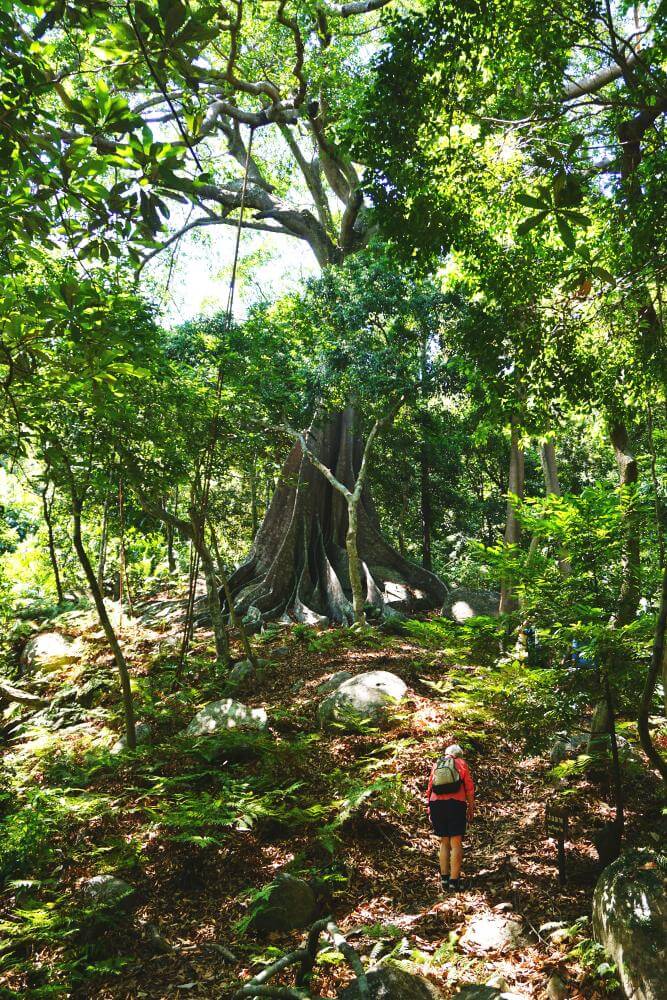
The focus for our day tour was Son Tra’s resident population of Red-shanked douc Langurs, one of nearly 100 primate species native to Southeast Asia. The Langurs are listed as critically endangered by the International Union for Conservation of Nature (IUCN).
Without the early start, we were told, our chances of sighting some of the rare animals would dwindle to somewhere between ‘unlikely’ and ‘no way.’
Son Tra Peninsula is home to some 400 animal species, including monkeys, snakes and more than 100 varieties of resident and migrating birds. The wild habitat also supports 1,000 plant varieties, almost a third of which have medicinal properties.
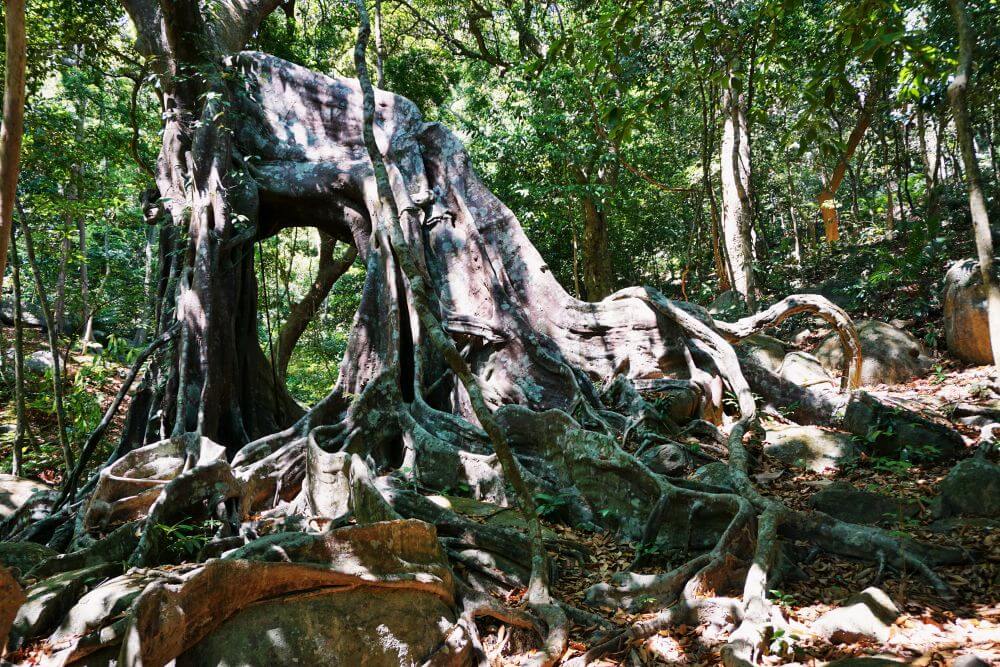
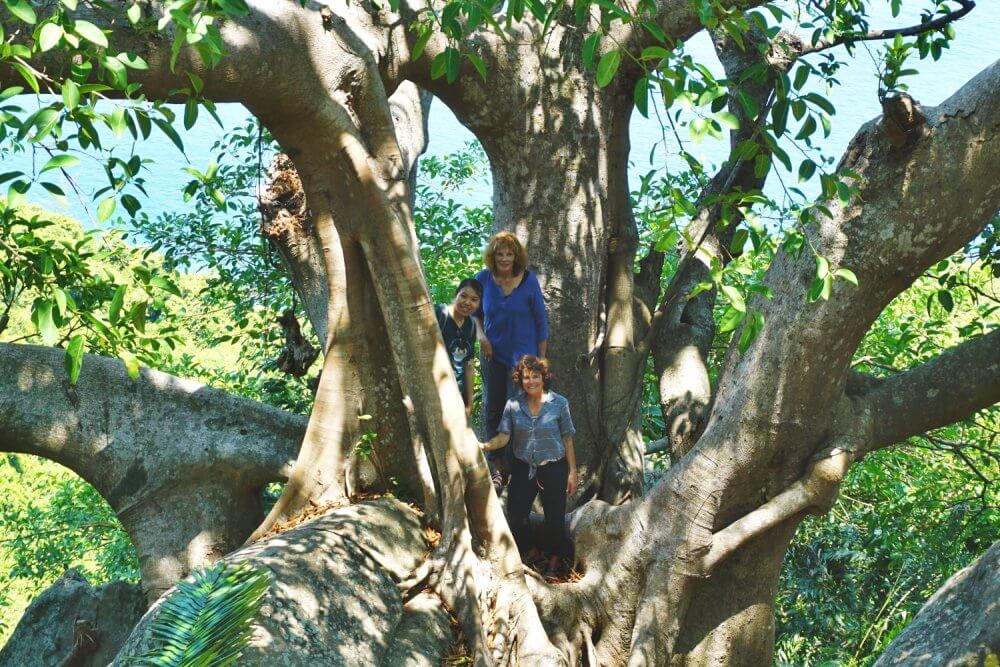
The Langurs’ habitat is threatened in Vietnam
The guide for our trip was a Vietnamese friend who works for GreenViet, a local organization dedicated to protecting the Langurs’ habitat. Like so many wild areas, developers see the Langurs’ home territory as ripe for exploitation.
With its scenic views, beautiful sandy beaches and convenient location near a large population center, they picture the peninsula turned into one massive resort/theme park. Development plans are currently on hold, but the threat remains.
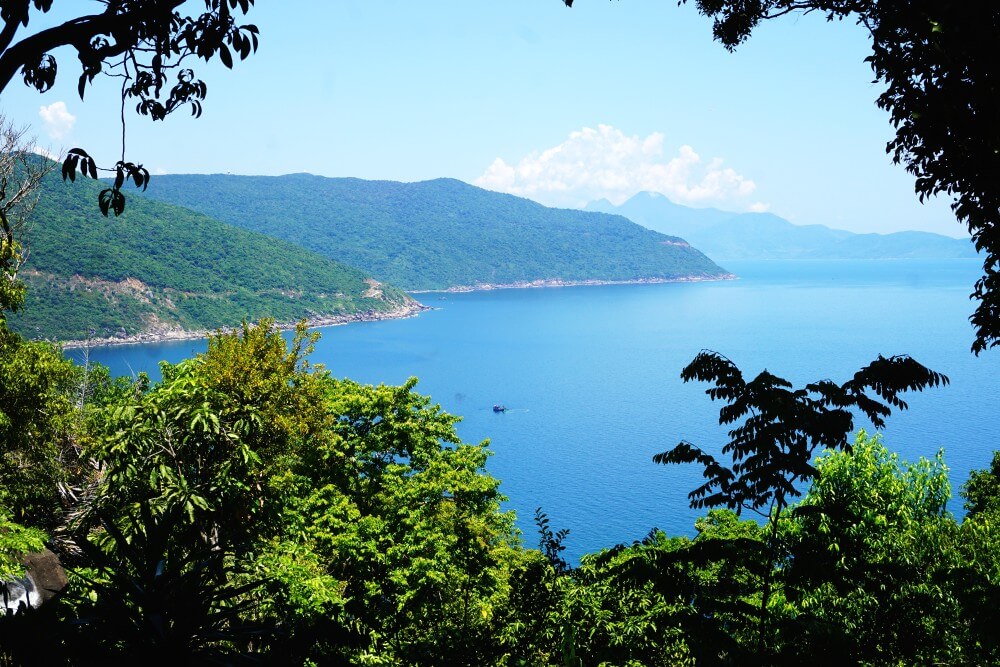
We learned that the last research census pegged the peninsula’s Langur population at around 1,300 individuals. The vegetarian primates stay mainly in the jungle canopy, leaping from tree to tree to dine on leaves and fruit. An average adult Langur will eat a couple kilos of leaves each day, getting all the nutrition and water they need from the natural high-fiber diet.
From a distance, male Langurs appear to be quite large. While only a few feet tall with a somewhat longer tail, their muscular upper body features disproportionately long arms. Fully outstretched, their arm span can reach up to a meter-and-a-half (around 5 feet). Females are somewhat smaller overall but have a similar long reach.
The extended family works as a team
A typical extended Langur family will include one or two adult males, multiple “wives” and several youngsters. At around three years old, males are expelled from their birth family and expected to establish a family of their own. Mature females leave the birth family when they are taken as a mate.
When a Langur mother becomes pregnant again, the other females in the group will help care for her existing children. “It takes a village…”
During our trip we were fortunate to see several Langurs, including an extended family grazing among the sprawling branches of a massive tree. One young Langur spent as much time watching the six of us as we spent watching him.
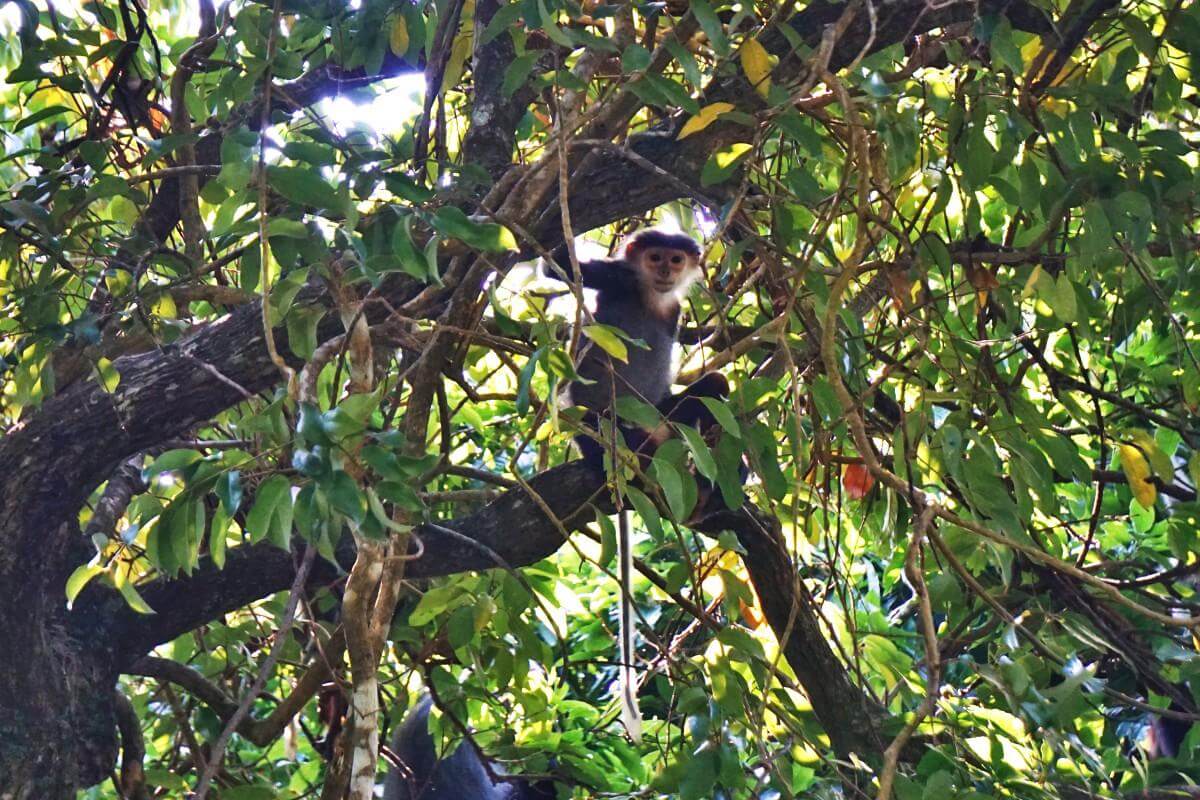
He observed our group from the safety of his high perch, gently swinging his long tail from side. All the while he munched on leaves, as if he were eating popcorn while watching a movie on the ground below.
+++++++++++++++++++++++++++++++++++++++++++++++
In 2019, National Geographic produced a short video about the endangered Langurs of Son Tra Peninsula. Watch it here:
+++++++++++++++++++++++++++++++++++++++++++++++++++++++++++

